
 |
| Golden
Triangle - with Taj Mahal - India's top tourist Destinations
New Delhi - The classic India tour takes in Delhi, Agra and Jaipur, known as the Golden Triangle. Other Indian cities have long become important tourist destinations too, such as the financial centre Mumbai - previously called Bombay - with its Bollywood moviemaking industry. Many tour operators also arrange trips to the southern Indian state of Kerala, with its hotels offering holistic Ayurveda therapies. But neither Mumbai nor Kerala can compete with the trio of Delhi, Agra and Jaipur, according to Indian Tourism Minister Ambika Soni. The Golden Triangle remains the most frequently booked tour, she said. A Golden Triangle tour typically begins in the capital Delhi, whose two parts, Old Delhi and New Delhi, are like different worlds. In the government district, in New Delhi, visitors are amazed at the locals' good-humoured generosity. Traffic there is fairly moderate by Indian standards, and the spacious, tree-lined streets exude metropolitan grandeur. Take Rajpath ("King's Way"), for instance. A boulevard as straight as an arrow, it runs from the presidential palace to the All India War Memorial arch, better known as India Gate. Rajpath is made for parades and processions, and every year on January 26 it is the scene of a marvellous spectacle: India's Republic Day Parade. If you come to Delhi, you ought not miss the colourful parade. Nor should you pass up a visit to Old Delhi, whose narrow streets and junk-cluttered bazaars are more typically Indian: crowded, loud and chaotic. It is hard to believe that the city has two faces that are so unlike one another. In the Lodhi Gardens you can completely forget that you are in an overpopulated city. Earlier known as Lady Wellington Park, the grounds include several tombs of rulers from the Lodhi dynasty, whose reign in the 15th and 16th centuries preceded that of the Moguls. The park's extremely relaxed atmosphere is more interesting than the tombs, though. Joggers, fitness walkers and people simply out for a stroll use the well-kept lanes and paths. You can see a man zestfully do push-ups in the grass while a couple embrace on a bench and a businessman nearby speaks excitedly on his mobile phone. Or you can watch a young woman perform yoga exercises and an elderly man meditate while a family has a picnic next to them. Travellers en route to Agra, about 200 kilometres to the south, see other things: children in rags poking around in refuse, construction sites on every corner, and makeshift dwellings where people live fence-to-fence with animals. These sights are interspersed, again and again, with women in gaudily coloured saris, and streets teeming with bicycles, rickshaws, ox carts and automobiles. The air is heavy with exhaust fumes, the whiff of sandalwood, the stench of refuse and the aroma of sweet fruits. Tourists generally stop in Agra for one reason: the Taj Mahal. Recently named one of the updated seven wonders of the world, it is regarded by many as India's chief landmark. The Great Mogul Shah Jahan built this monument to eternal love for his favourite wife, Mumtaz Mahal, who died in 1631 at the age of 38 during the birth of her 14th child. Visitors from all over the world swarm around the building like ants. Fortunately, the grounds are spacious, and people who do not insist on photographing the white marble mausoleum from the front would do well to look for a walkway away from the beaten paths. There are benches there, too, allowing peaceful enjoyment of the huge structure's grandiose symmetry even at times when the bustle is at its peak. Sunrise and sunset are the times of day most popular with visitors. The Taj Mahal is also especially beautiful in the light of a full moon. Viewing the cenotaphs of Mumtaz Mahal and her husband (the actual tombs lie directly below) in the main chamber can be a powerful olfactory experience: Visitors must remove their shoes beforehand, but unfortunately are not required to have washed their feet. But even that cannot spoil the magical mood in the dimly lit chamber. Shah Jahan originally planned to build an identical mausoleum for himself, but in black marble, on the opposite bank of the Yamuna River. But he was toppled by one of his sons, who imprisoned him in the nearby Red Fort. There Shah Jahan cast longing glances at his Taj Mahal. Situated on the Yamuna River just two kilometres northwest of the Taj Mahal, the Red Fort is well worth seeing - and not only to re- enact Shah Jahan's glances at the final resting place of his beloved Mumtaz. The fort is surrounded by double walls with a circumference of 2.5 kilometres. They cannot protect visitors from what awaits them as soon as they step off the tour bus, however, namely a horde of people trying to sell them photographic film, smart cards, postcards and exotic knickknacks. A lot of tourists feel completely helpless when faced with these often pushy traders and beggars. The trick that Indians themselves use is simply to ignore them. If you look at them, you have already lost. You can buy something from the traders or give the beggars a couple of rupees, of course. But then you can expect to have a pack of new friends dogging your every footstep. The gigantic complex called the Red Fort, whose foundation stone was laid in 1565, once comprised more than 560 separate buildings. Most no longer exist, but what remains is enough to make it immediately clear to a visitor that the complex was not only a fortress but a royal city. Particularly notable are the Pearl Mosque and large terrace offering splendid views of the Taj Mahal. No sooner has the tourist returned to the street than he or she is besieged again. It is not easy to simply walk by when a mother holding a baby begs for money. Situations like these can occur every hour in India. It is no different in Jaipur, the last stop in the Golden Triangle. Located 270 kilometres south-west of Delhi, Jaipur is the most frequently visited city in India after Agra. It is dubbed the Pink City after the predominant colour of its buildings. Pink is not only the colour of the Hindu god Siva (Shiva), but also the Indian hue of welcome. One of Jaipur's main attractions lies 11 kilometres north of the city in the town of Amber. The palace and fort complex there, perched on a steep mountainside, is widely regarded as as the most beautiful such complex on the subcontinent. Like everywhere else in India, itinerant traders and beggars lie in wait at the entrance for tourists, who quickly break up into two classes. While some struggle up the zigzag path to the palace courtyard on foot, others ride up comfortably on magnificently decorated elephants. If you have never ridden an elephant to the top, you should at least once. The view from the back of one of these creatures is fantastic. Complete strangers photograph you the entire ride. Young Indians earn a few rupees on the side this way. To make their sales, they somehow manage to pick out their subjects later from the mass of tourists. The quality of the photographs is usually rather mediocre, but a souvenir is a souvenir. The Amber Fort is a little empire of its own. A walkabout there offers scenic views of the valley and adjoining Aravalli Hills. India's Golden Triangle DESTINATION: The Golden Triangle, in northern India, comprises the capital Delhi; the city of Agra in the state of Uttar Pradesh; and Jaipur, capital of the state of Rajasthan. HOW TO GET THERE/FORMALITIES: There are daily Lufthansa flights to Delhi from Munich and Frankfurt/Main. Air India offers three flights a week from Frankfurt. The Indian embassy in Germany provides visa information via the Internet at www.indianembassy.de. A six-month tourist visa costs 50 euros. The applicant's passport must be valid for another six months at least. CLIMATE AND TOURIST SEASON: The climate is hot, and in summer (July to August) it is usually very humid due to the monsoon. From April to June, temperatures often reach 40 degrees centigrade. The best time to visit is from early October to early March, when temperatures are generally under 30 degrees. LANGUAGE: The official language is Hindi, but in cities English is spoken as well. CURRENCY: One dollar is worth about 40 Indian rupees. The Indian currency may neither be brought into nor taken out of the country. Currency can be exchanged at airports and in many hotels. TIME DIFFERENCE (from Central European Time): summer time + 3.5 hours, standard time + 4.5 hours. HEALTH: No vaccinations are required. But it is recommended that travellers be vaccinated against polio, tetanus, diphtheria, hepatitis A and B. |
|
|
|
|
|
Home |
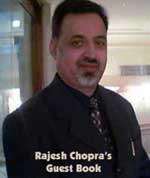 |
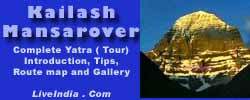 |
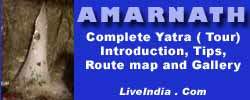 |
 |
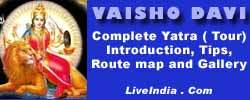 |

Miss World - 2000 Priyanka Chopra |
 |
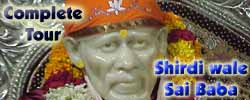 |
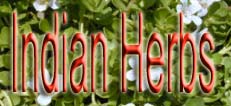 |
 |
 |
 |
 |
 |
 |
| Privacy Policy for LiveIndia.Com |
|
( The Trade Marks Act, 1999, No. 01403083. User Since : 01/04/1997 ) All rights reserved. No part of this publication and other sites of under liveindia.com may be transmitted or reproduced in any form or by any means without prior permission from the publisher Live India Internet Services or Mr.Rajesh Chopra, L.C.Premium Cables, 1826, Amar Nath 2nd Building, Bhagirath Palace Delhi - 110006, India. Liveindia.com or Mr.Rajesh Chopra is not responsible for any wrong information under live india's sites, For confirmation of any information it is recommended that you reconfirm it from your end. |